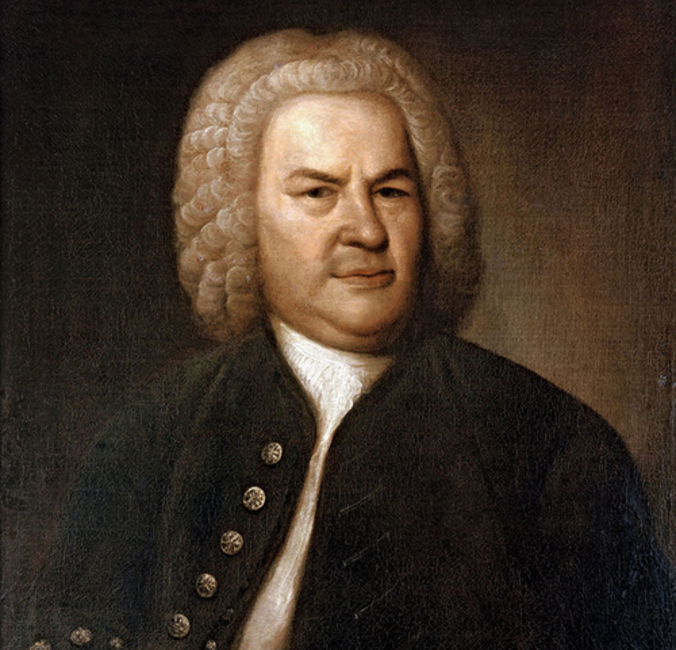Bach Series
Tommie Andersson Gallichon
BACH Nº 2
Tommie Andersson performs the Sarabande from JS Bach's Partita No. 1 in B minor for solo violin, BWV 1002, transcribed for Gallichon

PROGRAM NOTES
(1685-1750)
PARTITA NO. 1 IN B MINOR FOR SOLO VIOLIN, BWV 1002
Sarabande
The origin of the Sonatas and Partitas for solo violin probably extends back to Bach’s first tenure in Weimar, when he was employed for six months as a court musician. One of the other Weimar court musicians at that time was Johann Paul von Westhoff, a well-educated and well-travelled violinist who in 1696 had published a set of short, four-movement Partitas for Solo Violin. These Partitas are the first known multi-movement works for unaccompanied violin and may have been known to Bach, as we can safely assume he would have met and worked with Westhoff.
Bach’s collection for solo violin was brought to a finished state in 1720 in Cöthen, during his service as Kapellmeister to Prince Leopold. The collection would remain unpublished until 1802, but it remains unknown when and by whom these works were first performed, although it is highly probable Bach himself played them as he was also an accomplished violinist.
Since the publication of the collection, many adaptations and transcriptions of the Sonatas and Partitas have been made for a multitude of instruments by various composers and musicians. Founding Member of the Australian Brandenburg Orchestra Tommie Andersson explains how he came to create his own transcription for this performance:
![]()
I first heard this Sarabande (which was originally written for the solo violin) in Year 8 in high school in a music class and fell in love with it straight away. It came from an LP with Andres Segovia on classical guitar, so a very romantic rendition and far removed from our historically informed practice but it made a huge impression on me. Since then, I kept it in my repertoire as a classical guitarist and when I switched over to playing Bach on the lute it was an obvious choice to play it on the gallichon since its tuning is so similar to the guitar. I find that a lot of Bach’s solo violin and cello music lends itself really well to be transcribed to a plucked instrument. In this transcription I have taken the bassline down the octave when suitable and I have filled out some chords to broaden the harmony. I have tried not to make any big changes so that the character of the piece stays the same.
So why not play a piece by Bach that was actually written for the lute I hear you say? Well, the question of Bach’s so-called 'lute works' is a real can of worms and there is a lot of debate and different opinions about it. Personally, I do not really think that Bach wrote any works for the solo lute as such. He may have written these pieces with the sound of a lute in his mind but there are too many unplayable passages, big chords and impossible keys to fit the description. Lute players must resort to transposing, simplifications of chords and rearranging to make Bach’s 'lute works' playable on the lute. I wonder what violinists and cellists would say if they had to treat their Sonatas, Partitas and Suites the same way to make them playable? Composers contemporary to Bach wrote music for the lute that was very idiomatic and well-suited to the instrument even if sometimes difficult; mostly in tablature so you can see at a glance where to put your left-hand fingers on the fingerboard. In my opinion, Bach probably wrote a lot of this music for the Lautenwerk (a lute-harpsichord strung with gut strings). Having said that, the music that Bach wrote is of course always outstanding, and being able to play it, on any instrument, is a privilege.
TOMMIE ANDERSSON
WHAT TO LISTEN FOR
The earliest literary references to the zarabanda come to us from Latin America, and notably this form of the dance was banned in Spain in 1583 due to its extraordinary obscenity. The zarabanda and its sung text was usually accompanied by guitar, castanets, and sometimes other percussion instruments.
During the seventeenth century various forms of the dance were developing concurrently, and this movement from JS Bach’s Partita No. 1 closely aligns with the typical characteristics of the slower French and German sarabandes: set in a slow triple metre with a strong sense of balance based on four-bar phrases.
Program Notes: Joanna Butler & Hugh Ronzani, 2020
Image Credit: Katelyn-Jane Dunn, 2020
BACH SERIES PRESENTING PARTNER
Artists
Listen
{% error.message %}
More for you...
{% series.name %}
Featured Content
{% series.featuredTitle %}















